Innovations for Educational Facility Design
For perimeter situations, another approach is using sliding and folding glass walls, says NanaWall's Thomas, pointing to the Booker T. Washington STEM Academy, a 225-student K-5 school in a northeastern neighborhood of Champaign, Ill., conceived by Cannon Design to accommodate an underserved African American neighborhood with a focused science and mathematics curriculum. "These operable wall systems meet code requirements for energy, fire safety and hurricane resistance, which schools need. Their real advantages, however, are optimizing limited floor space and increasing classroom flexibility, while enhancing student learning and creating a more rewarding teaching environment in some education settings."
The same gains are possible inside the building – even as fire-rated separations – adds SAFTI FIRST's San Diego: "Skillful uses of fire-rated glass walls for interior separations allows natural light to penetrate further into the building, which also maximizes shared lighting between spaces."
In addition to the proper visual environment, educational facility owners are becoming more cognizant of the benefits of carefully tuned acoustics. The decisive study on classrooms by the University of Kansas in 2000 calculated an average speech intelligibility rating of 75% or less for U.S. schoolrooms, suggesting that at least a quarter of what teachers say is unheard – and likely unlearned. A related fact, according to the National Center for Education Statistics (NCES): On average, teachers miss two days per year due to vocal fatigue.
While interior acoustics are addressed by reducing background noise and reverberation time as outlined in the Acoustical Society of America's 2010 ANSI standard for classrooms, more attention is also being paid to exterior wall acoustics, says Roxul's Robertson. "There are new tests to measure OITC, or outside-inside transmission class for façades, windows and doors that protect students against transportation noise and other low- to mid-frequency sounds," he explains. "Similar to the STC rating, a higher number is better, which can result from a more tightly sealed envelope or good acoustical insulation, or both."
Incorporating three prerequisites and 14 unique credits, the IEQ category in LEED demonstrates the importance of innovations in environment for improved learning. Five of the credits relate to pollutant or emissions sources after the construction phase ends, including microbiological contaminants. "The importance of air quality – and regulations relating to air quality – has had a dramatic effect on school design," says Zinder. "This has been caused by a number of mold scares in the region," he adds, along with health issues and minimum standards in the codes and education-related laws.
Outdoor-air delivery monitoring, increasingly used in university and K-12 buildings, is based on the use of CO2 and airflow monitors programmed to meet minimum levels prescribed in the ASHRAE standard 62.1-2007. The technique is especially valuable for variable-air-volume (VAV) mechanical systems. "Schools are required to have a certain number of air exchanges through the day, but while fresh air is considered a positive for the indoor environment, air exchange can be costly when it comes to energy efficiency. Ventilation technology like HRV and heat exchange can address this," says Zinder, alluding to heat-recovery ventilation.
Points for Innovation and Design
As HVAC techniques like HRV become more common in schools, building automation systems and controls are getting more sophisticated, Zinder observes. This is true of many other building systems and entire facilities: Innovative design strategies often require more of the building managers and maintenance teams, even as they become more automated and energy-efficient.
Some advances in school design gain popularity because they have fewer moving parts and even reduce tasks for school operators. Geothermal systems, for example, add underground water loops and heat pumps to the HVAC system, but they obviate the need for new boilers or cooling towers. This saves space and preserves architectural integrity, particularly for retrofit applications, says ClimateMaster's Landers.
For the LEED Gold-rated, 54,000-square-foot Metro Career Academy, an Oklahoma City school for at-risk high school students, an EIFS exterior with continuous exterior insulation and a green roof help to reduce initial energy needs. Below, a ground-loop well field of 121 bores serve a rooftop heat-pump system of 49 modular units delivering earth-supplied heat and air conditioning to individual classrooms.
"Mechanical systems are the highest cost for the schools to manage," notes AECOM's Dekker. "The trend we're observing is although higher-efficient units are becoming more prevalent and cost effective, it is third-party commissioning that brings the biggest benefit to schools." Commissioning helps identify and resolve problems early, she adds; later, the commissioning authority returns to verify MEP systems are functioning as designed. An example is AECOM's use of thermal storage for a new, LEED Gold three-story library at Loyola Marymount University in Los Angeles. "This allowed for enough cooling to add 2 million square feet of new building without increasing the size of the central plant," says Dekker, while also cooling water during off-peak hours, cutting costs.
Adaptive reuse. In addition to strategies for reducing operations costs, universities and K-12 schools are reducing capital costs by means of innovative strategies for repurposing existing structures. "Adaptive reuse of existing building stock has been driven more by the difficult economic times, to meet critical growth needs without the greater expenditures for new facilities," says Jeff Stanton of SmithGroupJJR, adding that the savings are often reinvested by universities and schools for HVAC, lighting and envelope improvements.
When it comes to retrofitting and renovating buildings, says Petersen Aluminum's Batkoff, "The focus seems to be more on recladding or refacing, which works well over concrete structures, EIFS and even existing metal panels. It requires removing some of the cladding to expose the solid structure to attach furring strips. In other cases, these furring strips can be attached directly over the existing substrate."
Some campuses and facilities have benefited from a different strategy, adding new rainscreens or light claddings such as EIFS over masonry or aged brick. Others are adding new buildings or modernizing old ones with larger expanses of high-performance glass and metal combined with multiple materials, including natural, colored and patterned cladding, in some cases to match team colors for stadiums and sports facilities, says CENTRIA's Rick Brow. "When we think of universities, traditional brick and mortar comes into one's mind's eye, but that's not necessarily what's being done at most universities today," he adds. "Metal and glass can lend an image of being more progressive and attractive, for example for a laboratory or science building."
On the other hand, the University of Michigan Law School has blended a historical restoration with the updating of its facilities. Stained glass windows and Collegiate Gothic limestone detailing on its 1933 Hutchins Hall were preserved as part of an addition including a new commons area, with a new glass and steel arched roof to capture more square footage. The new space had to be separated by a 2-hour rated barrier, however, so the original stained glass windows were matched with new stained-glass panels and incorporated clear, 2-hour fire-resistive glazing in between. "A lot of schools that are traditional are seeking to maintain that original campus look, even as they expand and add contrasting modern facilities," says Safti First's San Diego.
Blending tradition and contemporary motifs is a common sight on university campuses, as at the University of Cincinnati, where a master plan by landscape architect George Hargreaves's has included impressive new buildings in contemporary styles, such as the 2006 recreation center by Morphosis and KZF Design.
The same is true at primary and secondary schools, such as The Haverford School in Haverford, Pa., where a 2008 upper school and administration building was added to complete a 15-year master plan. Its 1903 Wilson Hall, the campus's first main building, was saved from the wrecking ball, restored and integrated with a prominent new brick-and-glass wing, certified LEED Gold. "The new building is wrapped in glass curtain wall and flooded with natural light, containing an array of informal gathering areas, paneled meeting pods, open computer stations, study nooks, and exhibition spaces," says MGA Partner's Kelley.
Learning communities and academies. These varied and engaging learning spaces are another important architectural innovation of recent years. At the Haverford School as at public K-12 schools, both adaptive reuse and new construction projects have aimed at increasing student-teacher contact while lessening the chance that students may "fall through the cracks," in the architect Quattrocchi's words. This includes creating learning communities or academies as well as varying the size and character of learning spaces, from small seminar rooms for a dozen students to double-sized classrooms for as many as 60 students and collaborating teachers. The larger spaces often rely on flexible furnishings on casters for breakouts into smaller study teams.
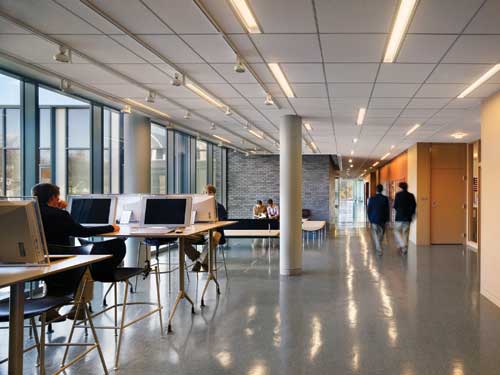 |
The Haverford School's new upper-school building, designed by MGA Partners Architects, demonstrates the use of varied learning spaces rather than repetitive traditional classrooms. Organized around a "village street" are an array of informal gathering areas, paneled meeting pods, open computer stations, study nooks and exhibition spaces. Photo courtesy of Halkin Photography |
Notice
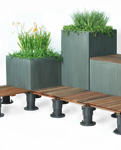
www.BisonIP.com
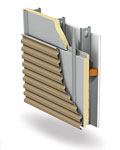
www.buildbetterwalls.com

www.price-hvac.com/sustainable
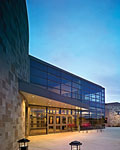
www.sunguardglass.com
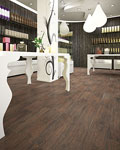
www.floridatile.com
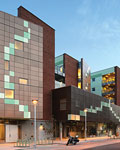
www.dri-design.com
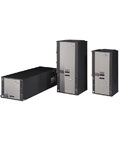
www.climatemaster.com
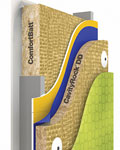
www.roxul.com
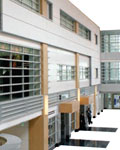
www.safti.com
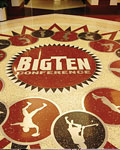
www.ntma.com
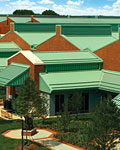
www.PAC-CLAD.com
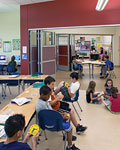
www.Nanawall.com









